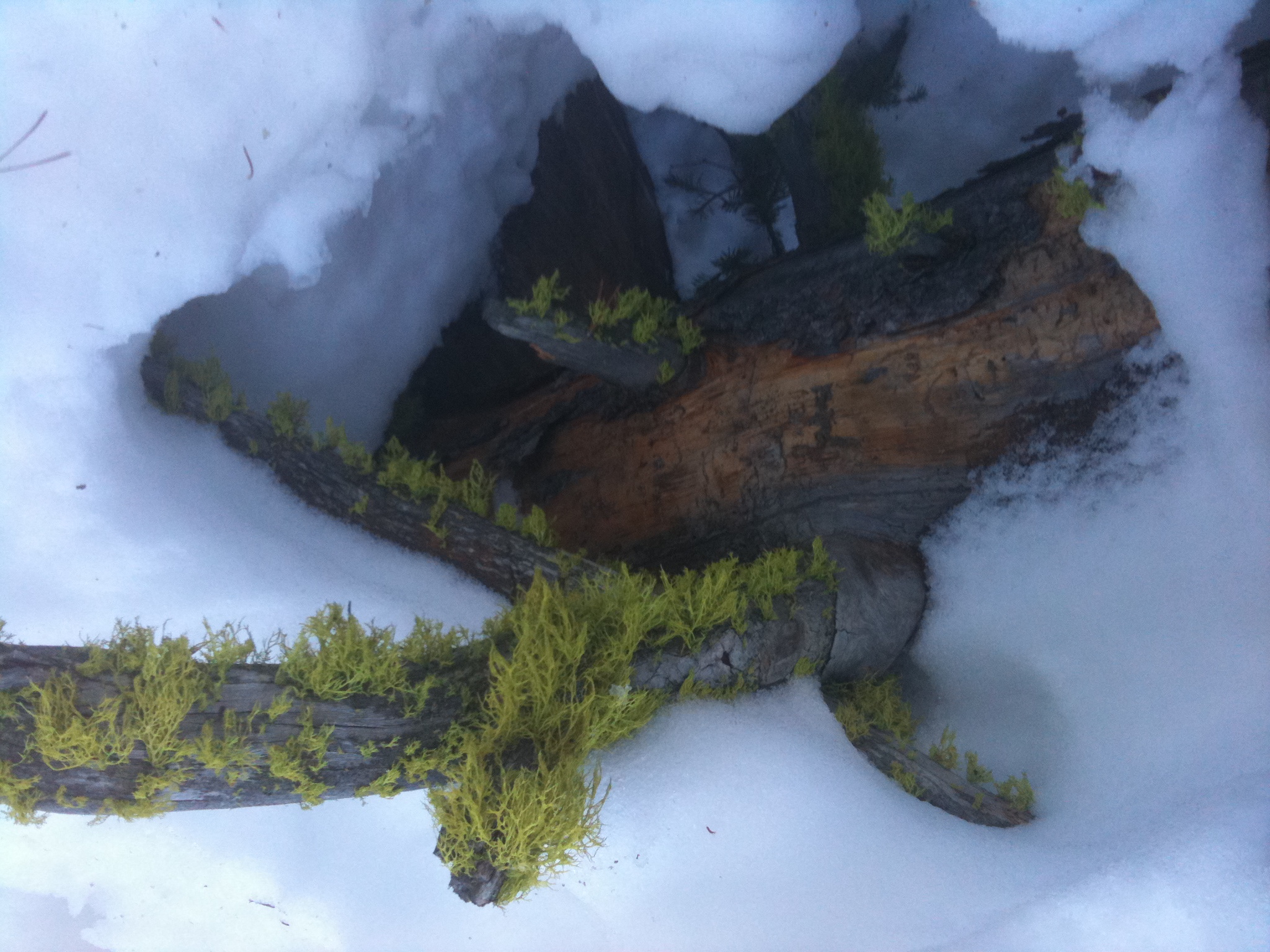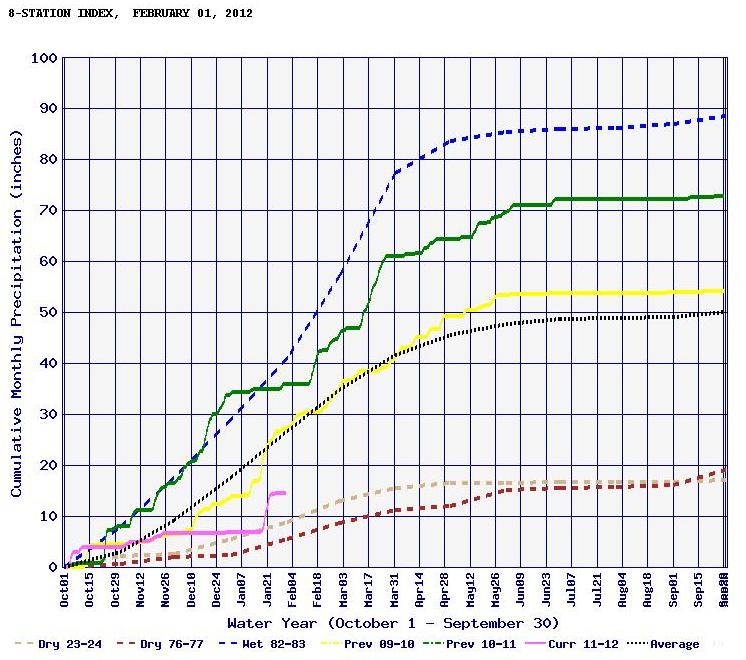Skimpy Sierra snowpack may take a while to show up in water supplies

This morning’s snow survey (PDF) didn’t turn up any big surprises. As remote sensors foreshadowed, water content in the Sierra snowpack is 37% of normal for this time of year, and less than a quarter of the average for April, which is when the snowpack is usually at its peak before it begins melting and filling up California’s reservoirs.
What’s worrisome about that, according to Jeanine Jones, Interstate Resources Manager at the Department of Water Resources, is that about half of California’s annual precipitation typically falls between December and February, months that are mostly already behind us. “So where we are this year is: November was dry, December was close to record dry, January was maybe half of average,” Jones told me. “And currently the forecast for the first ten days or so of February is essentially dry.”

The above chart, from the Department of Water Resources, shows that this year — the pink line — isn’t quite the worst on record, but it’s a lot closer to the bottom than it is to boom years like 1982-’83 (the blue dotted line), or even last year (in green). Jones says luckily, last year was wet enough, that we’re still riding its coattails. Most of the state’s reservoirs (PDF) still hover around their averages for the year.
“In terms of impacts to water users this year, the fact that we have good storage conditions courtesy of a wet last year is helpful,” she said. “And a good take-home message here is that we need to think about preparing for the possibility of a dry 2013, because we won’t be going into 2013 with the kind of carryover storage we have now, both in reservoir storage and groundwater basins.”
But, Jones adds, Californians will feel impacts from this dry winter. “The people who rely soley on annual rainfall: the grazing industry, dry-land farming, potential wildfire conditions, and then small water systems in rural areas that are dependent on fractured rock groundwater aquifers that may have very minimal recharge, those are the kinds of typical examples in a year like this.”
And winter’s not over yet. Jones says it’s not likely, but there is the chance that a big storm event could still happen and help catch us up.
